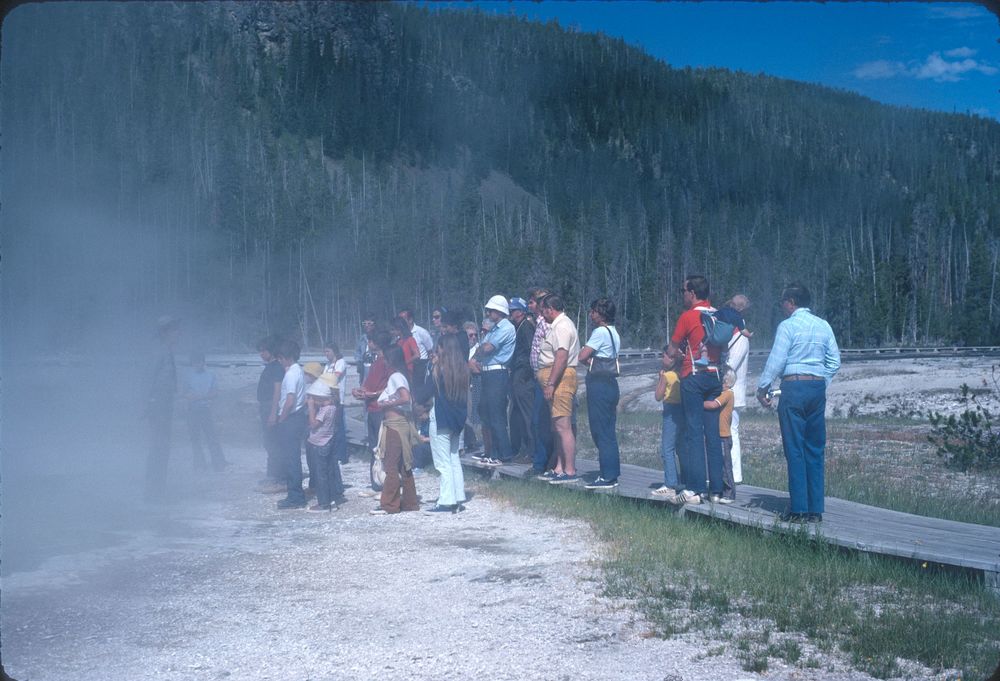
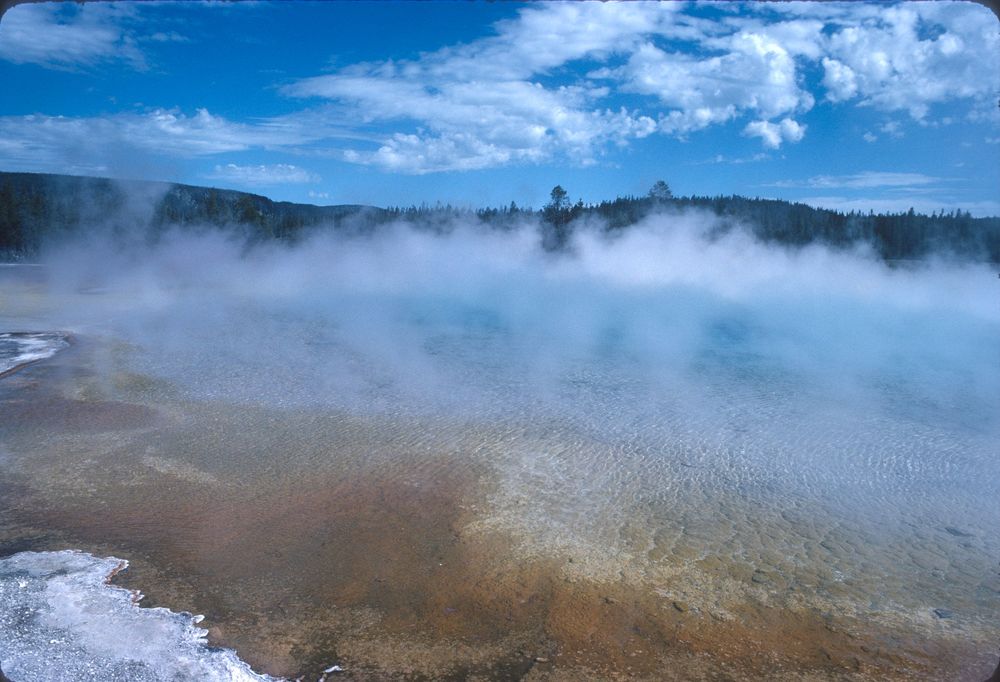
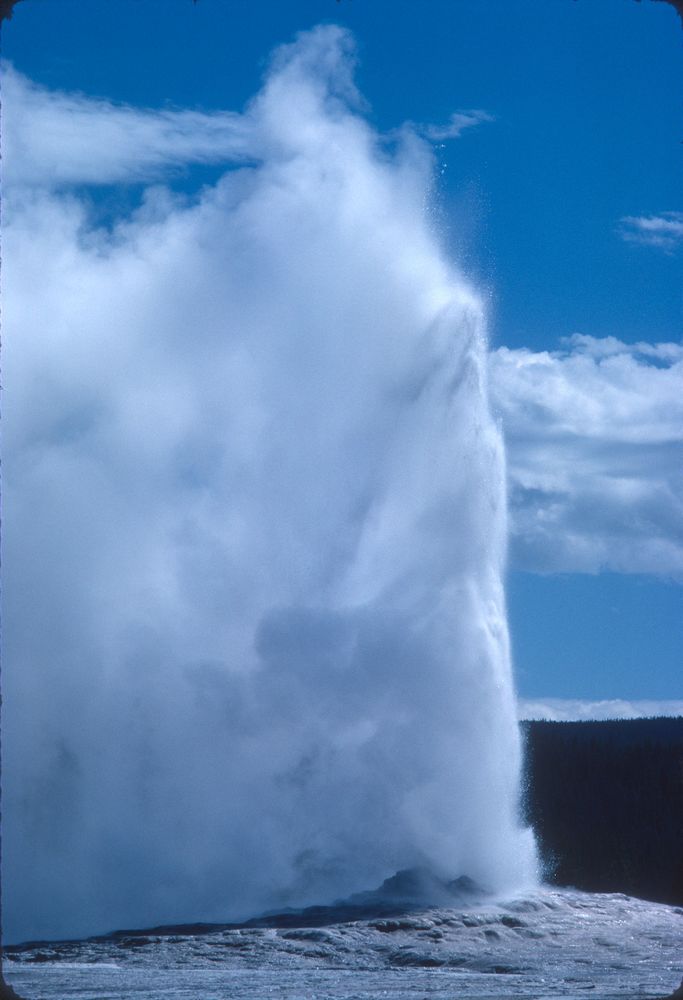
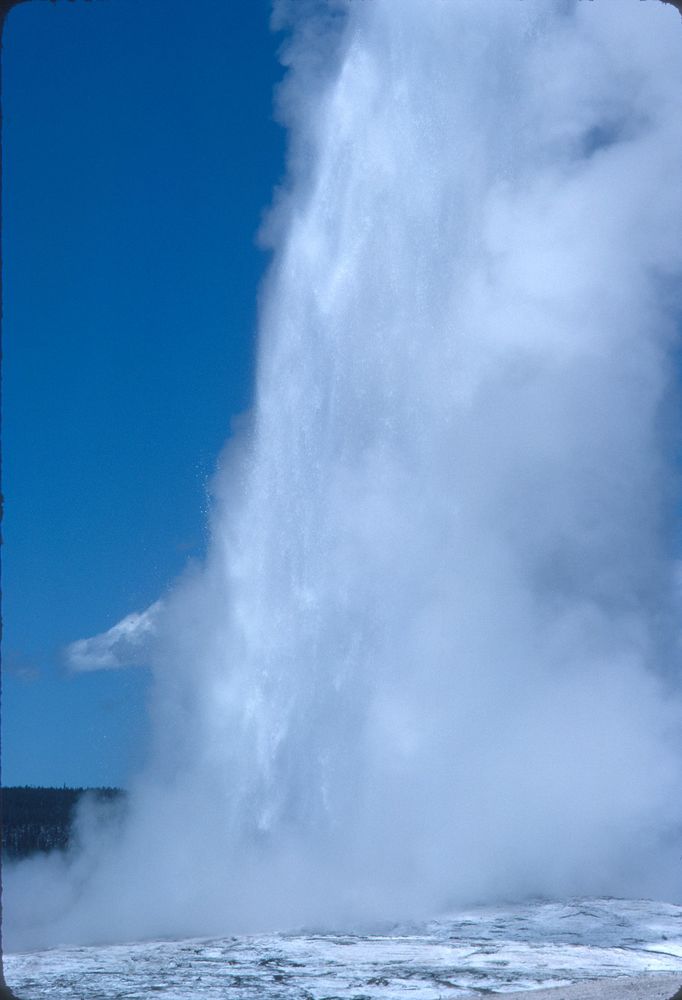
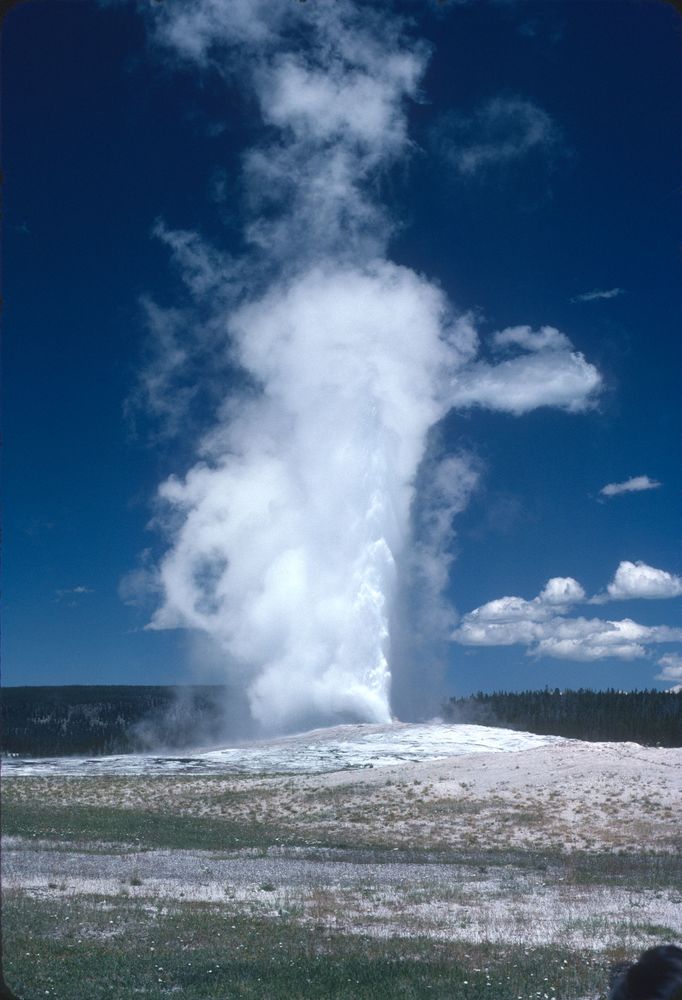

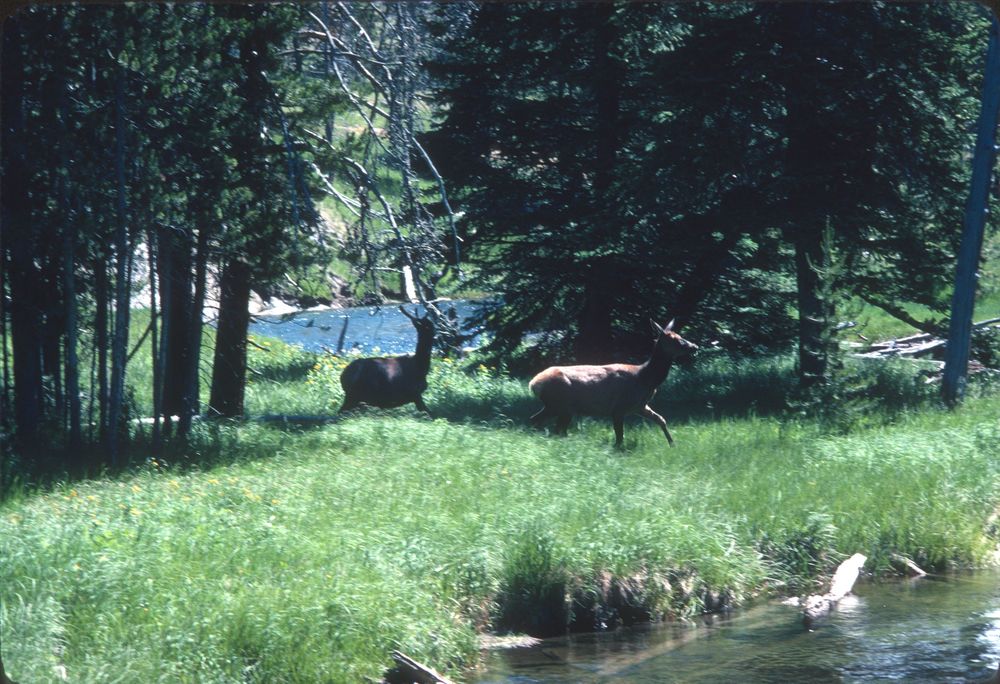
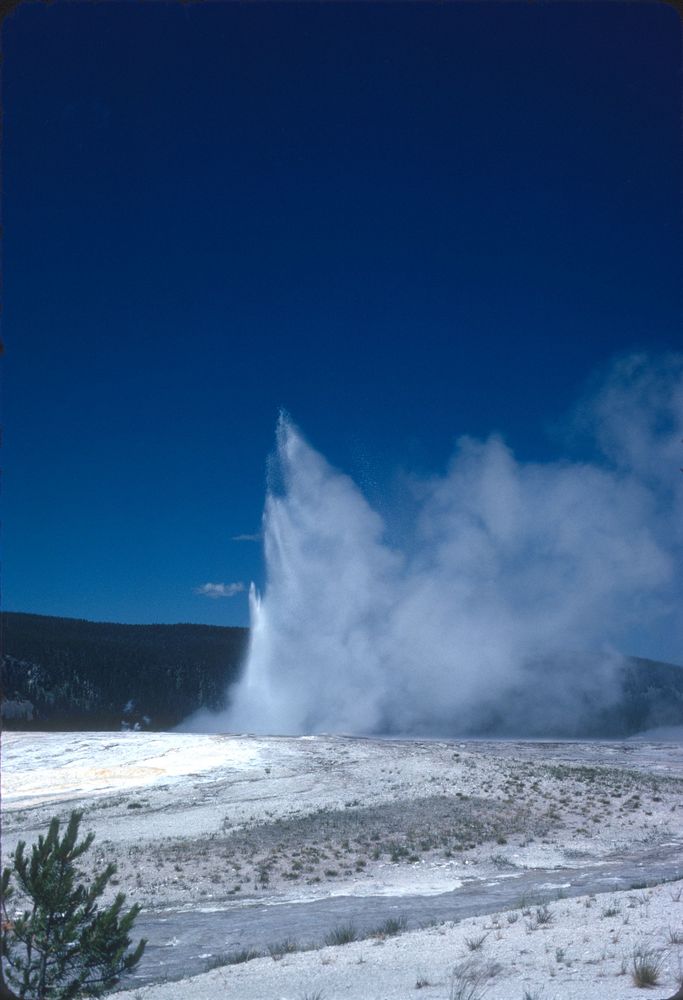
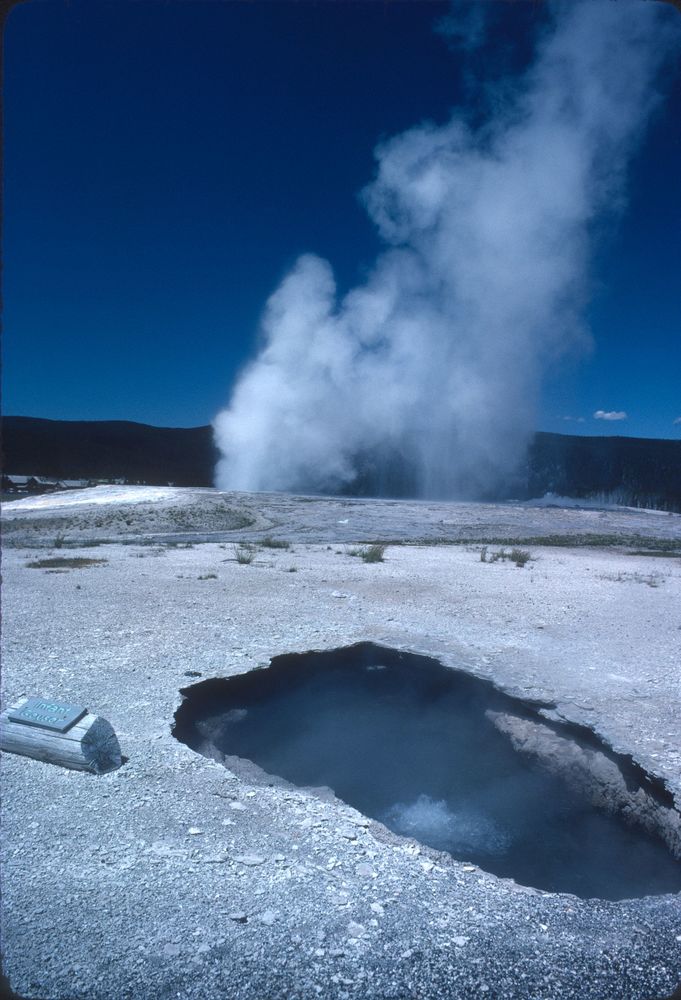
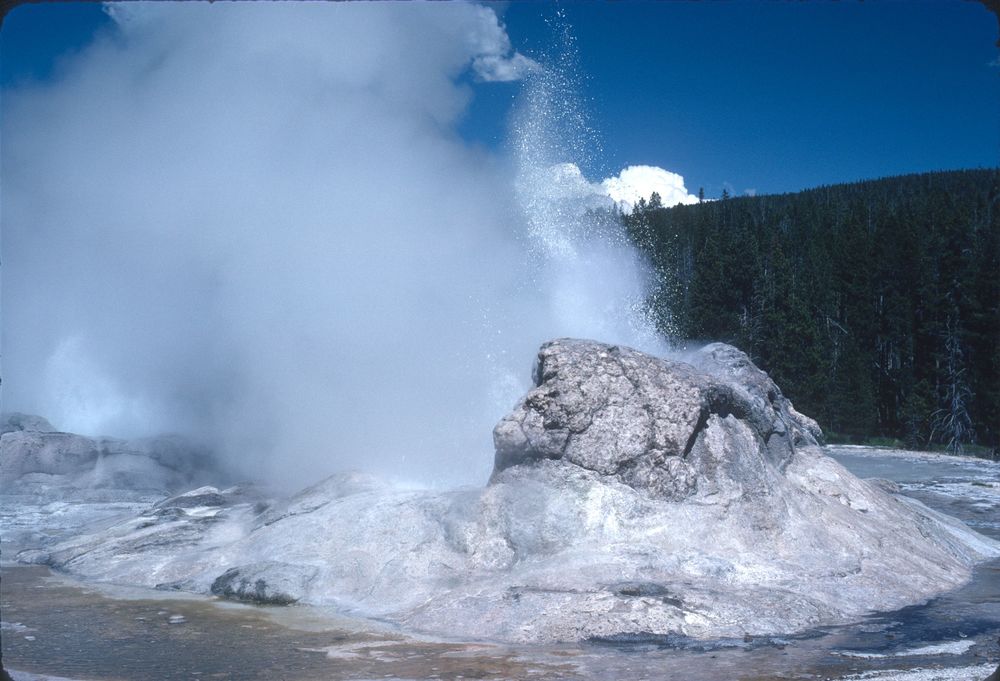
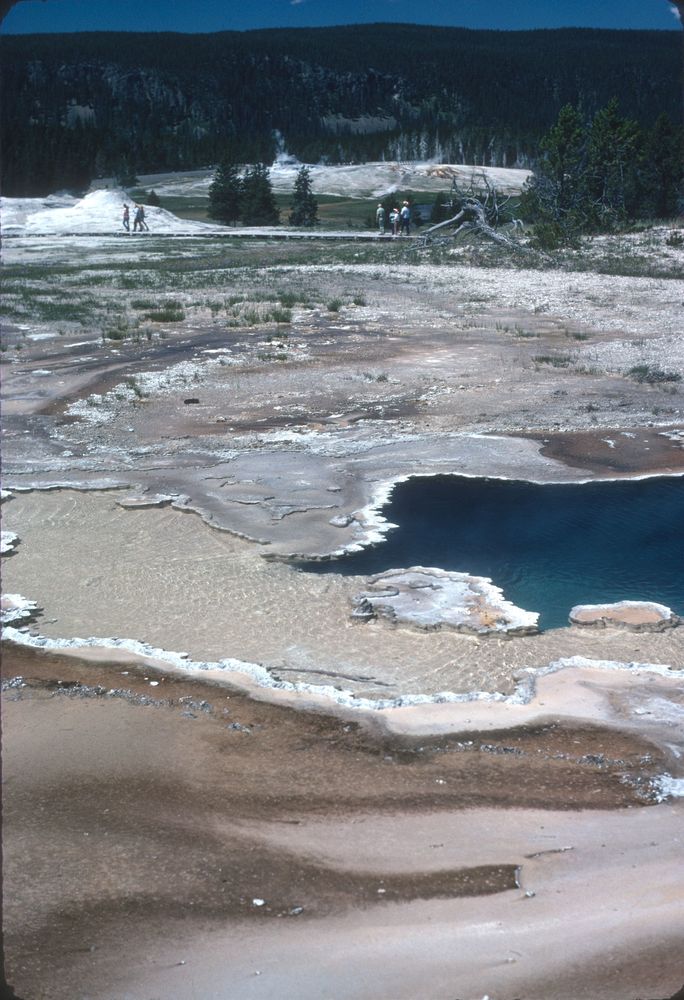
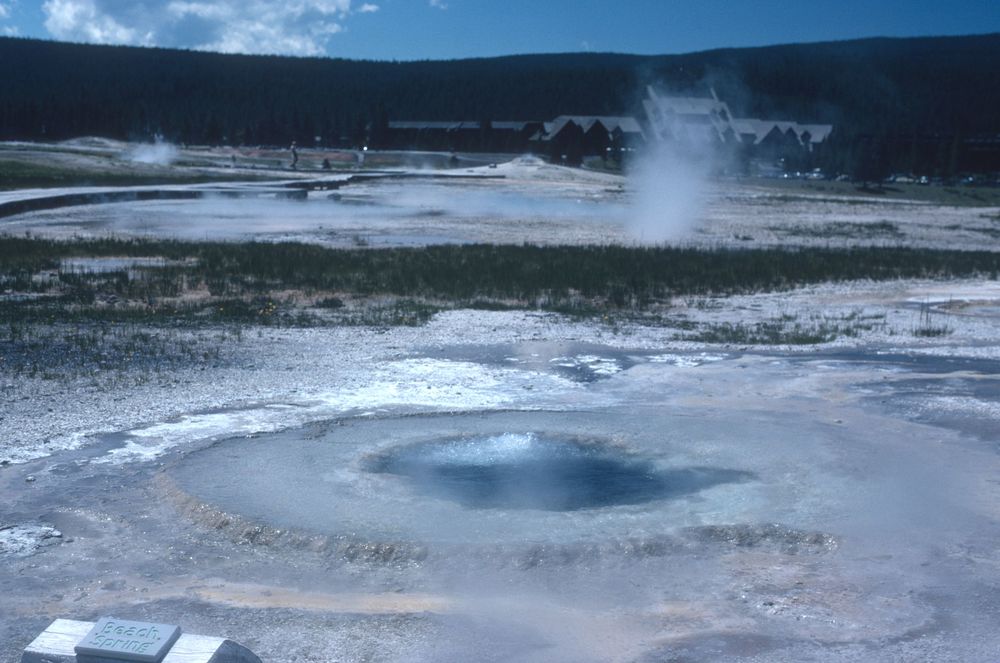
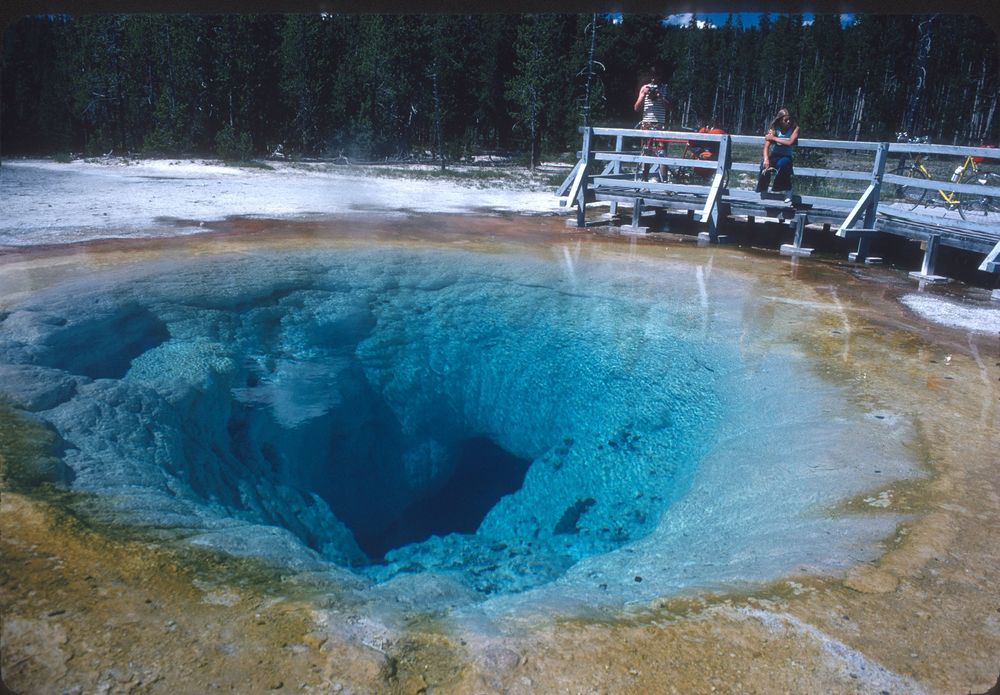
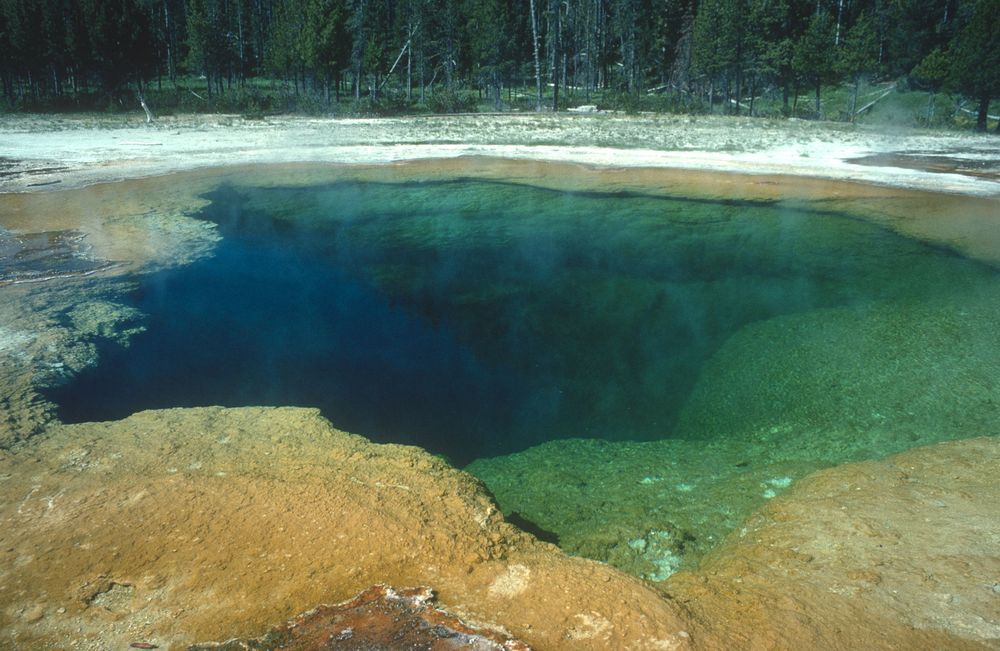
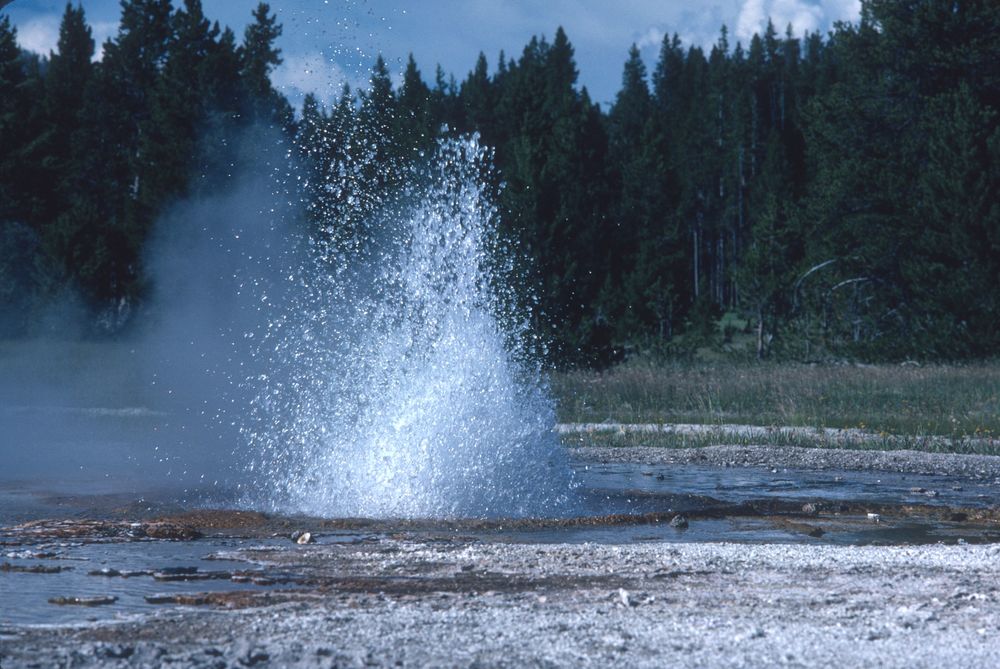
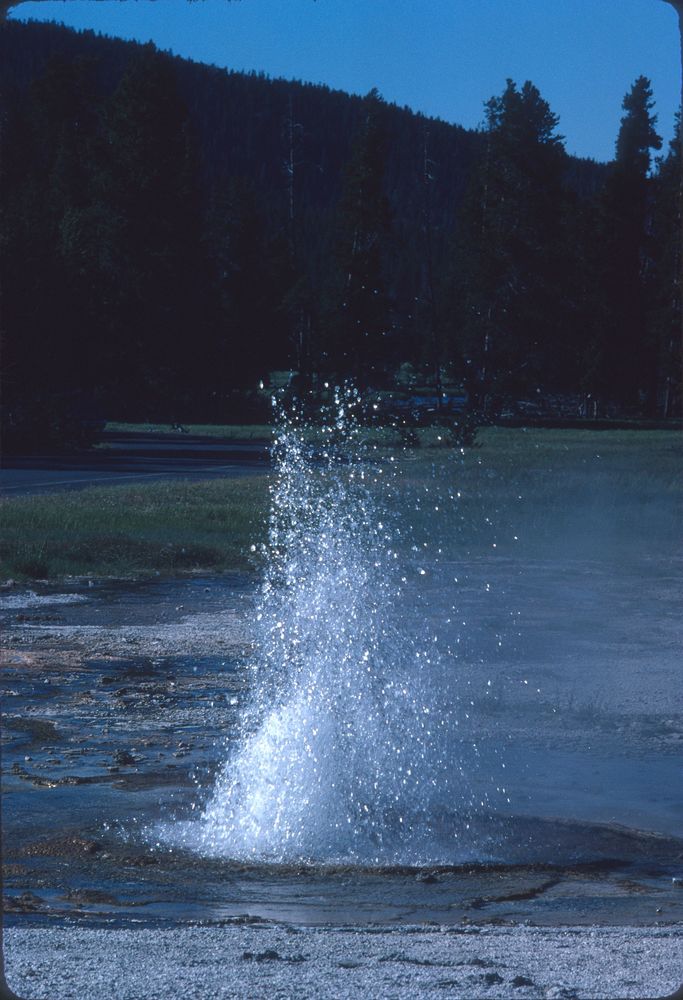
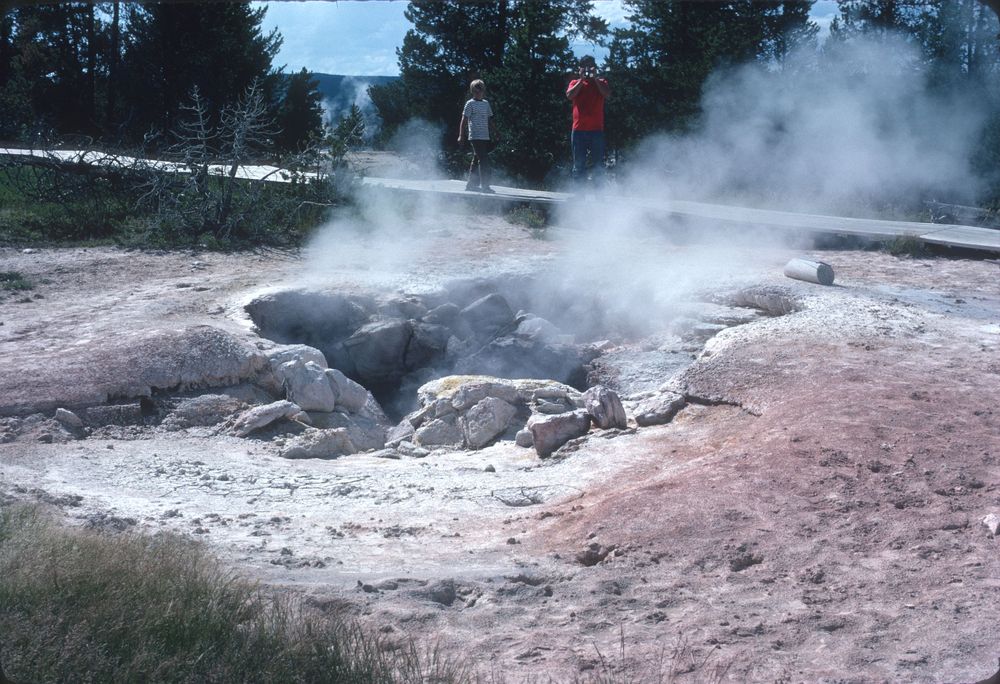
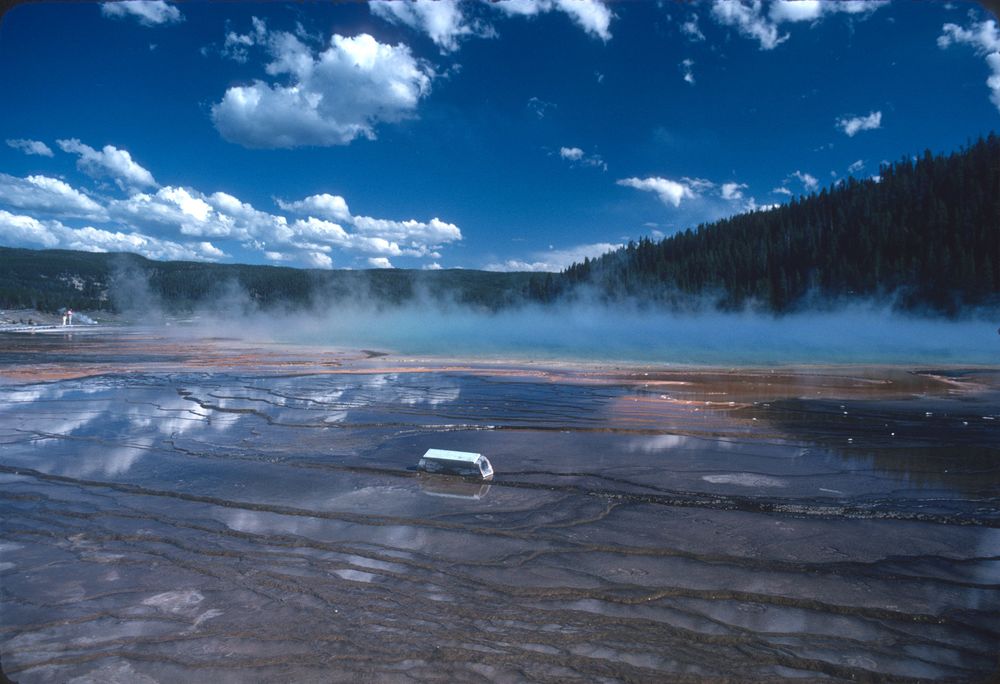
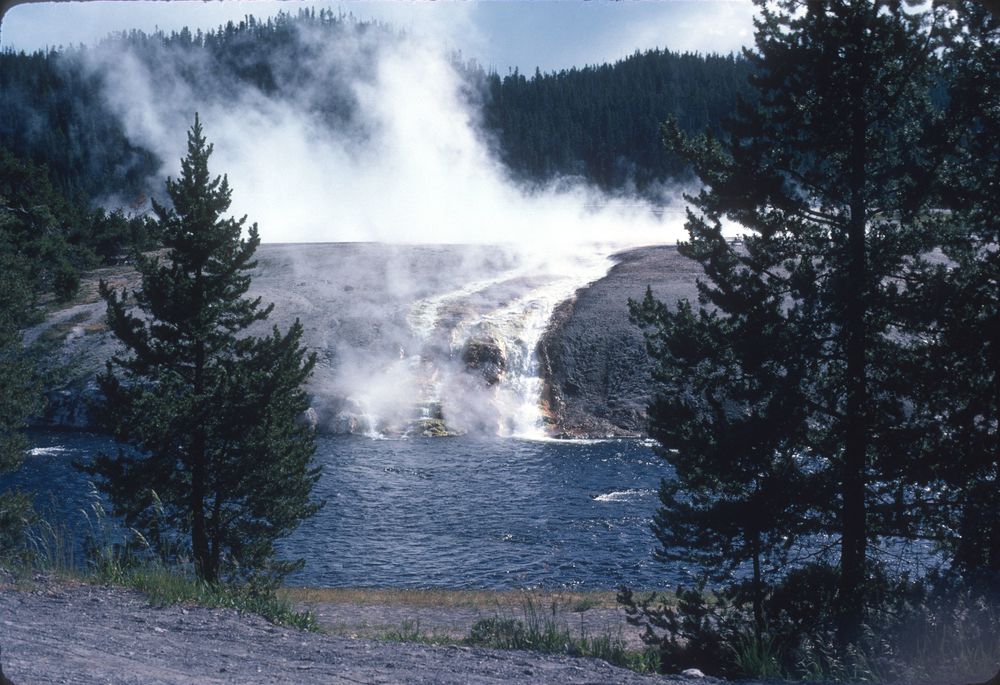
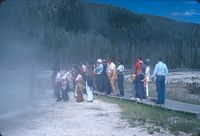
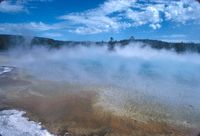
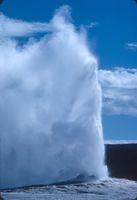
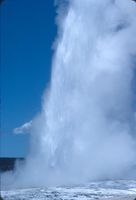
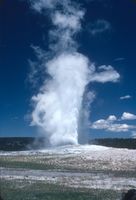
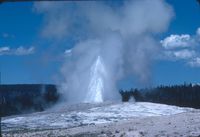
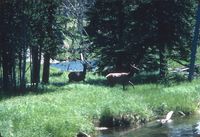
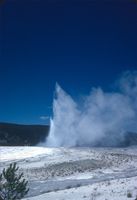
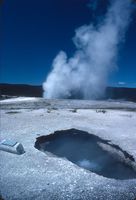
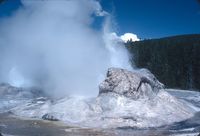
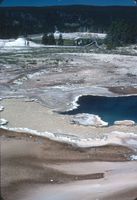
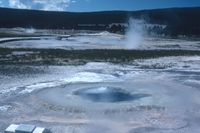
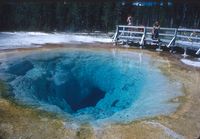
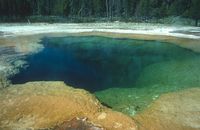
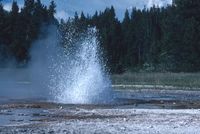
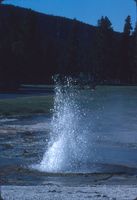
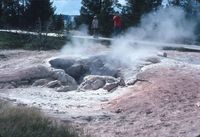
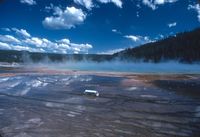
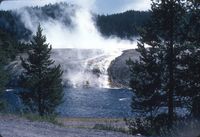
Return to index page
Return to home page
Written 2024 June 24, last updated 2024 July 2.
July 10th, 1:00PM
odometer start : 3149.2
I'm now in Yellowstone, and spent the night in a filled campground sharing a place with 2 cyclists who've been on the same route as I. They were already sharing their site with a pickup truck camper.
Today I tore up to Black Sands Basin to catch a guided tour of some of the hot springs then went to Old Faithful and got there 15 minutes before one eruption wandered around the area hoping a bigger geyser would erupt and saw Old Faithful again. There are hot springs all along the area between Madison Junction and Old Faithful which I may spend the entire day exploring. I hope I can get to Yellowstone Lake tonight though I may wind up back at Madison, where I was last night. Suppose I should go back to the visitor center and take in some of the stuff there. Did notice there's a topo map of the park there - that deserves some attention.
Lot to do - guess I'll get moving.
July 11th, 9:50AM
odometer start: 3214.3
Yellowstone is a park made in homage to the Great Gasoline God, and I think Park Service will be in for a long letter about what I think they should do. But first the positive stuff.
I spent all of yesterday exploring the hot springs area from Old Faithful west. Old Faithful itself didn't impress me too greatly which explains why all the pictures of it I've seen have never impressed me much. Its fame comes from its frequency and periodicity allowing reasonably close eruption forecasts making it a boon to parents with squirmy kids. On the tour of the Black Sands Basin yesterday morning the guide, who is the naturalist most involved with the hot springs (chief geyser gazer), told us that Giantess had started to erupt. Giantess is considered by most to be the most spectacular geyser in the park, but it has active periods only 1 - 5 times a year, each lasting 12 - 36 hours. I watched it for an hour but it stayed in a steam phase, so I missed out on the water phase. Much prettier than the geysers are the pools formed by the hot springs. Many are quite deep giving a beautiful blue color in the center and as water runs out in all directions around the edge the temperature gradient results in bands of colored algae and bacteria. One of my favorite geysers was in one of the pool areas. It was a tiny thing and erupted 5 - 8 ft high every 2 - 3 minutes. It was so small it didn't even have a name, it just sat by the parking area being ignored by most of the people who passed by.
Now, some of the negative comments. Campgrounds this time of year are normally filled around noon. Standard procedure is to get up in the morning, drive to the campground you want to stay at, claim a spot, then drive to whatever you want to see that day. Can't be done on a bike. In fact, trying to see the park is a real hassle. Yesterday I got up, rode from Madison to almost Old Faithful (16 mi) to catch a guided tour at 1000, went to Old Faithful for more info and maps, went almost all the way back to Madison and worked my way back visiting everything along the way, had dinner at Old Faithful then went to Grant Village (17 miles and 2 crossings of the divide) through rain and honking cars getting there at 2045. Fortunately I was able to find a camp site and got tent up before it got pitch black.
Just spent ~20 minutes talking with a ranger/naturalist who gave me a couple of good ideas. Turns out she went to Pitt and knows one of the Comp Sci. professors at C-MU. Time to go.
Looking back on my letters, I'm a bit surprised at how focused they are on the "Gas God National Park" aspects of Yellowstone. However, nearly all my photos are from at least 100 feet from pavement where the park becomes one of the few places I've been to where hearing the word "unique" doesn't make me cringe. So in addition to describing individual photos, here are some more regional notes.
Today's theme is thermal. The two main things I knew about Yellowstone before I got there were Old Faithful and the Yellowstone River's waterfall. Perhaps I knew the river has two big falls. There are several classes of thermal features beyond geysers. Going from driest to wetest:






































Return to index page
Return to home page
Written 2024 June 24, last updated 2024 July 2.